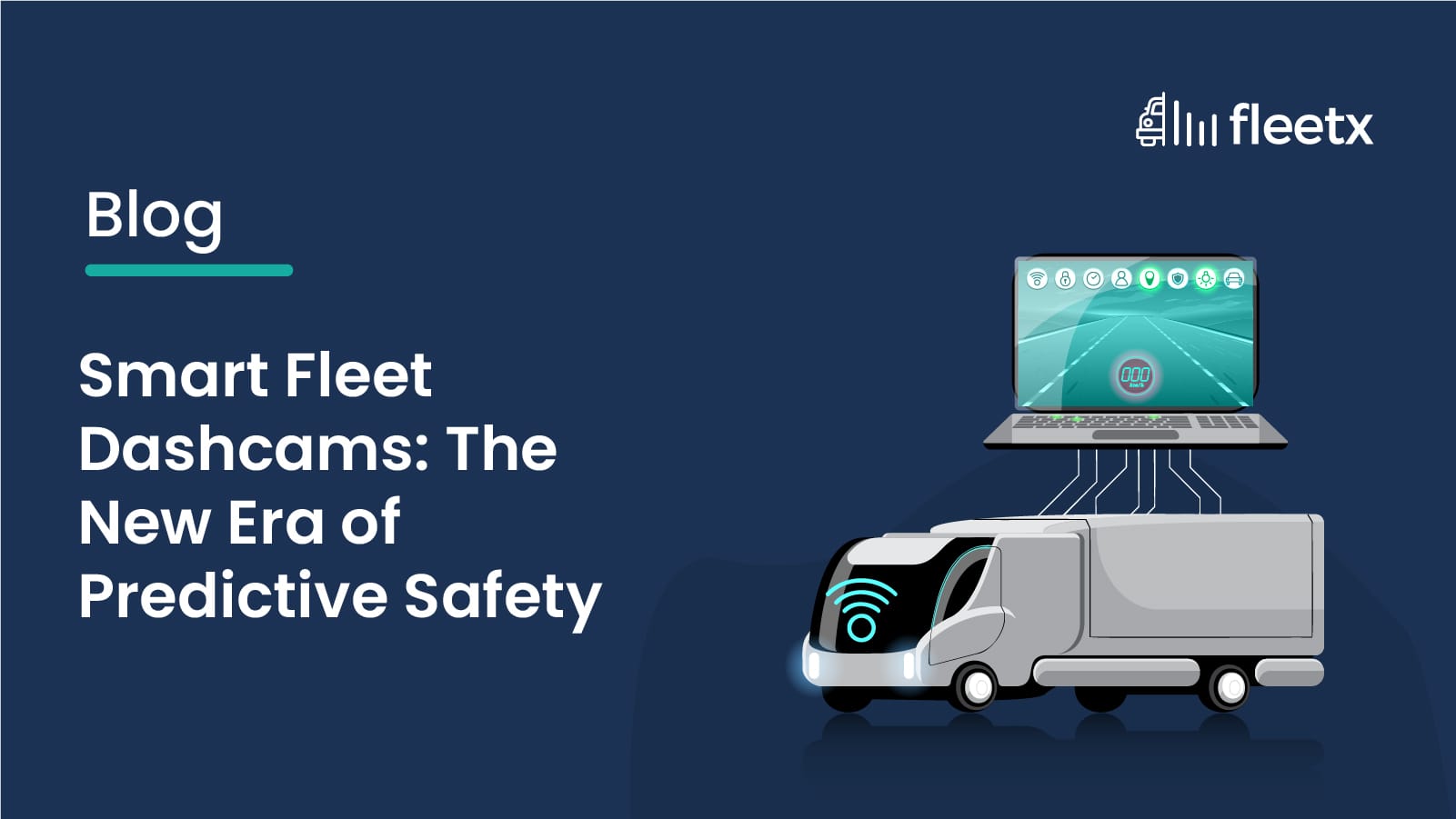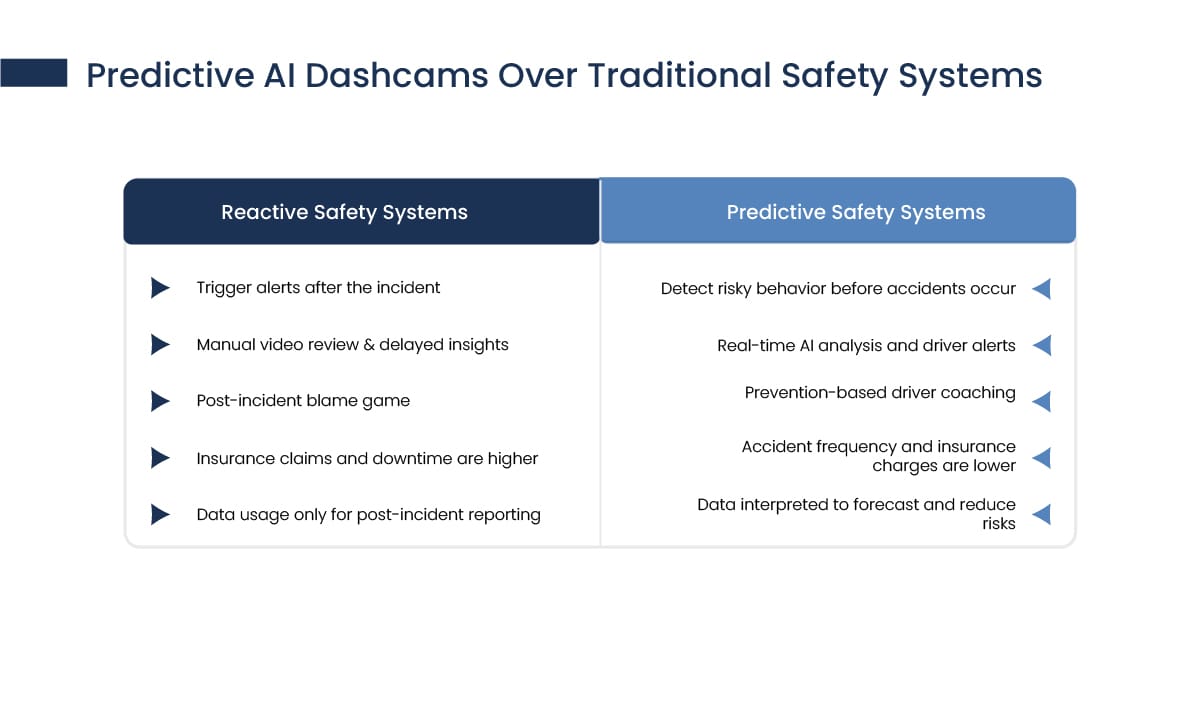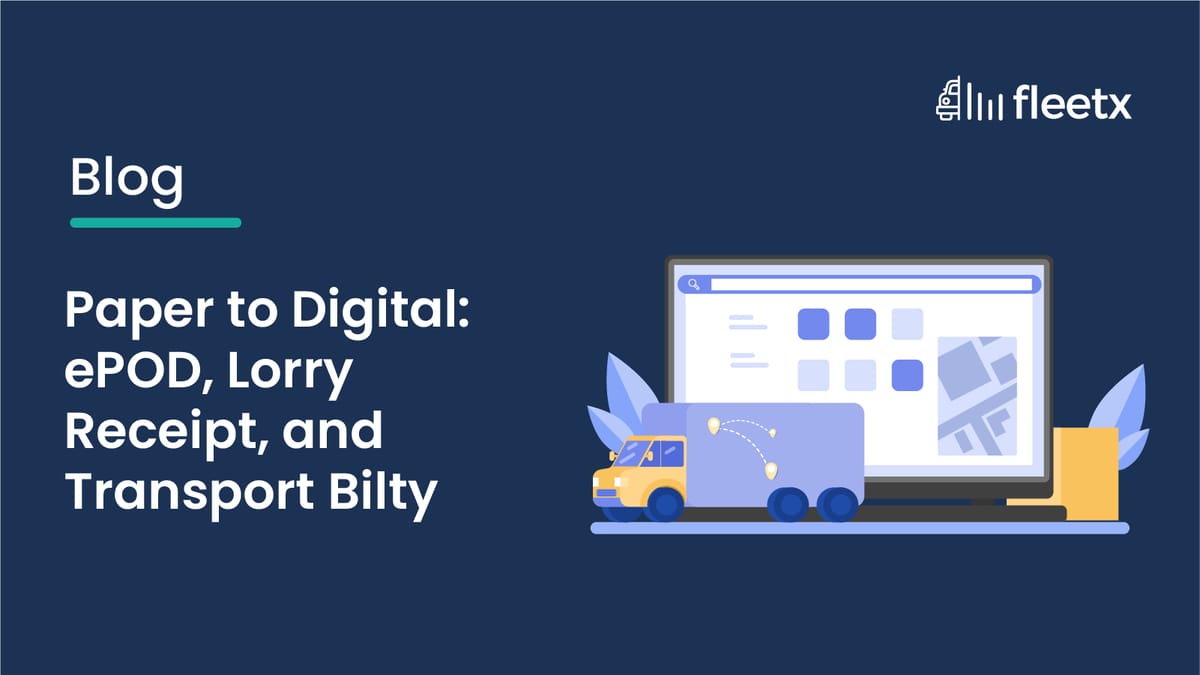
Smart AI-powered dashcams have a more powerful role to play now — incident prediction for incident prevention.
Welcome to the new era of predictive safety, where technology doesn’t just show you what went wrong, but tells you what might go wrong next. Powered by artificial intelligence and real-time data analytics, these systems are transforming the Indian trucking industry — shifting fleet operations from reactive firefighting to proactive prevention.
The Evolution from Reactive to Predictive Safety
For decades, fleet safety was reactive. Something went wrong — a speeding incident, a harsh brake, an accident — and then fleet managers would analyze reports, assign blame, and maybe add another rule to the SOP manual. It worked, but barely.
Predictive safety flips this script. It’s no longer about collecting footage after a crash; it’s about identifying risky behavior before it causes one. With AI dashcams analyzing live driving footage, fleets gain early-warning capabilities once reserved for aviation or autonomous vehicles.
When integrated with vehicle telematics, driver data, and route intelligence, these dashcams can recognize fatigue, distraction, and aggression — patterns that human eyes might miss — and alert drivers instantly.
The result? Reduced incidents, improved driver performance, and an entirely new level of operational confidence.
Risks Associated With Reactive Measures
Delayed Response to Risk Events
Reactive systems only trigger alerts once an unsafe event has already occurred. By then, the damage — whether physical or financial — is already done.
Inability to Detect Subtle Behavioral Changes
Human supervision often misses early warning signs like micro-fatigue or minor lane drifts, which are strong predictors of larger accidents.
Higher Operational Costs
Accident repairs, insurance premiums, and downtime pile up when fleets rely solely on after-incident analysis instead of prevention.
Driver Accountability Gaps
Reactive systems tend to assign blame rather than build accountability. Predictive AI shifts focus toward coaching and prevention, creating a culture of continuous improvement.
Limited Data Utilization
Traditional systems record data; predictive systems interpret it. Fleets that stay reactive waste valuable telematics data that could be used to prevent recurring risks.
Predictive AI: Preventing Accidents Before They Happen

Here’s how predictive AI in fleet dashcams is redefining safety:
- Real-Time Driver Behavior Analysis: Constantly evaluates driving style — tailgating, lane discipline, reaction times — to detect unsafe trends before they escalate.
- Fatigue & Drowsiness Detection: Uses facial feature analysis to identify early fatigue signs, alerting the driver to take a break.
- Distraction Detection: Monitors head and eye movements to detect mobile phone usage or lack of road focus, triggering in-cabin alerts instantly.
- Proactive Speed Violation Alerts: Predicts potential over-speeding situations using GPS, terrain, and historical driving data to prevent risky acceleration.
- Contextual Hazard Prediction: Integrates data from road conditions and traffic congestion to forecast potential incident zones.
- Driver Coaching Algorithms: Continuously learns from historical driving data and tailors feedback for each driver, helping them avoid repeat mistakes.
- Event Correlation Engine: Links multiple small behavioral cues — like harsh braking followed by lane drift — to predict accident likelihoods with remarkable accuracy.
What are the Benefits of Proactive Incident Prevention
Reduced Accident Frequency
Predictive systems cut down on collisions by identifying risky behavior in real time. The outcome? Safer roads, fewer disruptions, and reduced liability.
Lower Insurance Premiums
With verifiable safety improvements and reduced claims, fleets enjoy lower premiums and better negotiation power with insurers.
Enhanced Driver Retention
Safety-focused fleets build trust. Drivers appreciate technology that protects rather than polices them, improving satisfaction and retention.
Operational Continuity
Prevented accidents mean no downtime, fewer vehicle repairs, and uninterrupted service — crucial factors in time-bound logistics.
Data-Driven Decision Making
AI dashboards turn risk insights into actionable metrics, allowing fleet managers to set realistic KPIs for drivers and routes.
Improved Compliance
Proactive monitoring helps fleets adhere to transport ministry regulations and internal safety policies effortlessly.
Better Brand Reputation
A consistently safe fleet earns customer confidence. In an industry where reliability equals revenue, reputation is a serious differentiator.
Real-World Use Cases in Indian Fleets
Predictive dashcams are already changing how Indian fleets operate — quietly, but decisively.
- A long-haul carrier using AI dashcams reduced fatigue-related incidents by over 40% in just six months after adopting predictive fatigue alerts. The technology flagged micro-naps and eye closures that drivers didn’t even notice, prompting timely halts and rest breaks.
- In another case, a regional fleet transporting fast-moving consumer goods integrated predictive AI with its route management system. The result: early alerts on potential accident-prone zones on a route, leading to route adjustments and safer travel times.
- Several logistics operators now use AI-powered video analytics to score drivers daily. This continuous assessment enables proactive coaching, not punishment — helping identify drivers who might need retraining long before a violation or mishap.
Across applications, predictive safety isn’t about automation replacing humans. It’s about giving fleet managers superhuman foresight.
Advanced Features of AI Dashcams Enabling Predictive Fleet Safety
- Dual-Facing HD Cameras: Monitor both road and driver simultaneously for comprehensive situational awareness.
- Driver Identification Systems: Verify the driver’s face before ignition to ensure only authorized personnel operate the vehicle.
- In-Cabin Voice Alerts: Deliver real-time spoken warnings for fatigue, distraction, or unsafe driving behavior.
- Cloud-Based Video Retrieval: Automatically uploads critical video snippets post-event, minimizing manual intervention.
- Geofencing & Route Intelligence: Predicts route-level hazards based on location and time of day.
- Integrated Driver Scoring: Generates predictive risk scores based on long-term driving data to identify at-risk drivers early.
- Continuous Learning Algorithms: Improves accuracy over time as more driving footage and behavioral data are analyzed.
- Data Privacy Protocols: Encrypts and anonymizes video data to protect driver privacy and ensure compliance with data protection norms.
The Road Ahead: Predictive Safety as the New Fleet Standard
Predictive safety isn’t just another tech buzzword. It’s the new operational baseline for fleets that want to stay competitive in a high-risk, high-pressure environment like India’s logistics ecosystem.
Fleet managers who still rely solely on reactive measures are running yesterday’s playbook. The future belongs to those who embrace predictive intelligence — not to watch accidents happen, but to prevent them.
Smart AI dashcams have already proven they can reduce accidents, lower costs, and transform fleet culture. As algorithms evolve and data ecosystems mature, these systems will become the silent copilots every driver needs — alert, tireless, and always one step ahead.
How are predictive AI dashcams different from regular dashcams?
Traditional dashcams record footage for post-incident analysis, while predictive AI dashcams analyze live video to detect risky driving behaviors like fatigue, distraction, or tailgating in real time. They not only capture events but anticipate them — helping drivers and fleet managers prevent accidents before they happen.
Can predictive dashcams actually reduce on-road accidents in Indian conditions?
Yes. Predictive AI systems have shown significant reductions in accidents by identifying early behavioral and environmental risk cues — from fatigue-related micro-sleeps to sharp braking in congested areas. In India’s unpredictable road conditions, such real-time insights offer a major safety advantage for both drivers and operators.
Do predictive AI dashcams invade driver privacy?
No. Modern fleet dashcams follow strict data privacy protocols. Footage is encrypted, access-controlled, and only analyzed for safety-related parameters. Many systems anonymize data or restrict face visibility in reports, ensuring compliance with upcoming Indian data protection norms while maintaining driver trust.
What ROI can fleet owners expect from adopting predictive dashcams?
Predictive AI dashcams deliver measurable returns through reduced accidents, lower vehicle downtime, decreased insurance premiums, and improved driver retention. Over time, fleets also benefit from cleaner compliance records and stronger customer confidence — turning safety into a direct business advantage.






